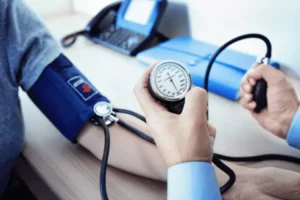Recognizing Alcoholism as a Disease

Treatment programs are evidence-based and integrate holistic practices in recovery. Our levels of care offer a flexible, personalized approach to treatment as you take steps to better your life. Alcohol addiction is a complex disease with psychological, biological and social components, and like other chronic illnesses, addiction often involves cycles of relapse and remission.
General Health
Let us remove the confusion and difficulty of verifying your insurance coverage for treatment. We have years of experience in the addiction space and contracts with many of the big name insurance providers. All information is confidential, and there https://ecosoberhouse.com/ is no obligation to enter treatment.

How major organizations define addiction
Some people believe that drinking more is a good idea to self-medicate since it temporarily relieves some of the uncomfortable depression symptoms. However, excessive drinking will only make the symptoms worse once the alcohol’s effects have worn off. Alcohol provides a temporary sense of calm, but mental health symptoms can worsen once alcohol is out of the system. Many choose to self-medicate with alcohol or drugs, but this opens the door for real problems with substance abuse and mental illness as the two can perpetuate each other into a vicious cycle. There are many risk factors and components to consider, but none more so than mental illness.

Co-occurring mental health conditions
Alcohol can make you more likely to be depressed, and being depressed can make you more likely to drink alcohol. People who have problems with alcohol are also more likely to self-harm and commit suicide. Alcohol affects your brain, making you feel relaxed in a small amount of time. As you drink more, you become intoxicated and unsteady, and you might do or say things you normally won’t.

- So if you have SUD, it’s not because you’re not strong enough to change things.
- The intoxication and withdrawal cycle can also cause MDD and other mental health concerns.
- Noticing these moments can help you make a plan for different ways to cope.
- There are effective ways to treat this disease and steps you can take to help a loved one enter recovery.
- Twelve-step groups, like Alcoholics Anonymous (AA) and other support approaches, can provide solidarity and emotional support through AUD recovery.
If you or someone you know is having thoughts of suicide, a prevention hotline can help. During a crisis, people who are hard of hearing can use their preferred relay service or dial 711 then 988. Hosted by Amy Morin, LCSW, this episode of The Verywell Mind Podcast shares is alcoholism a mental illness strategies for coping with alcohol cravings and other addictions, featuring addiction specialist John Umhau, MD. This is an example of a mental obsession – a thought process over which you have no control.
- For over 20 years Dr. Umhau was a senior clinical investigator at the National Institute on Alcohol Abuse and Alcoholism of the National Institutes of Health (NIH).
- Self-stigma makes a person living with SUD less likely to seek treatment.
- Alcohol addiction is a complex disease with psychological, biological and social components, and like other chronic illnesses, addiction often involves cycles of relapse and remission.
- As far back as 1933, the Standard Classified Nomenclature of Diseases listed alcoholism as a disease.
- Clinical trials are research studies that look at new ways to prevent, detect, or treat diseases and conditions.
Increased Risky Behaviors
Learn more about NIMH research areas, policies, resources, and initiatives. Find out how NIMH engages a range of stakeholder organizations as part of its efforts to ensure the greatest public health impact of the research we support. Some medications shouldn’t be mixed with alcohol as this might make you sick. There is a prevalence of comorbid AUD and PTSD of 15% to 30% overall and a prevalence of 50% to 60% among veterans and military personnel.